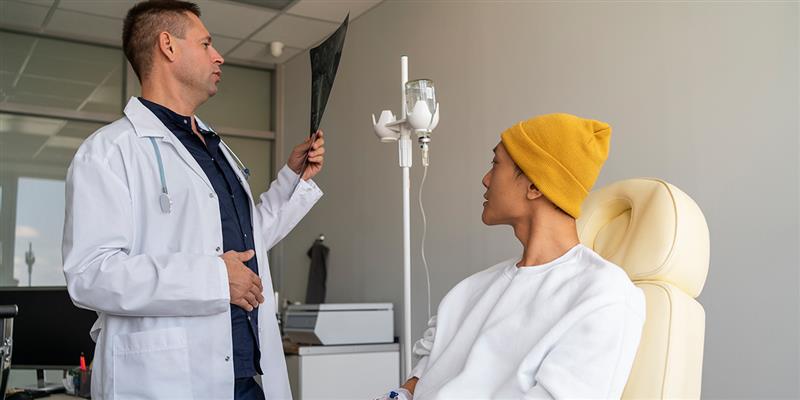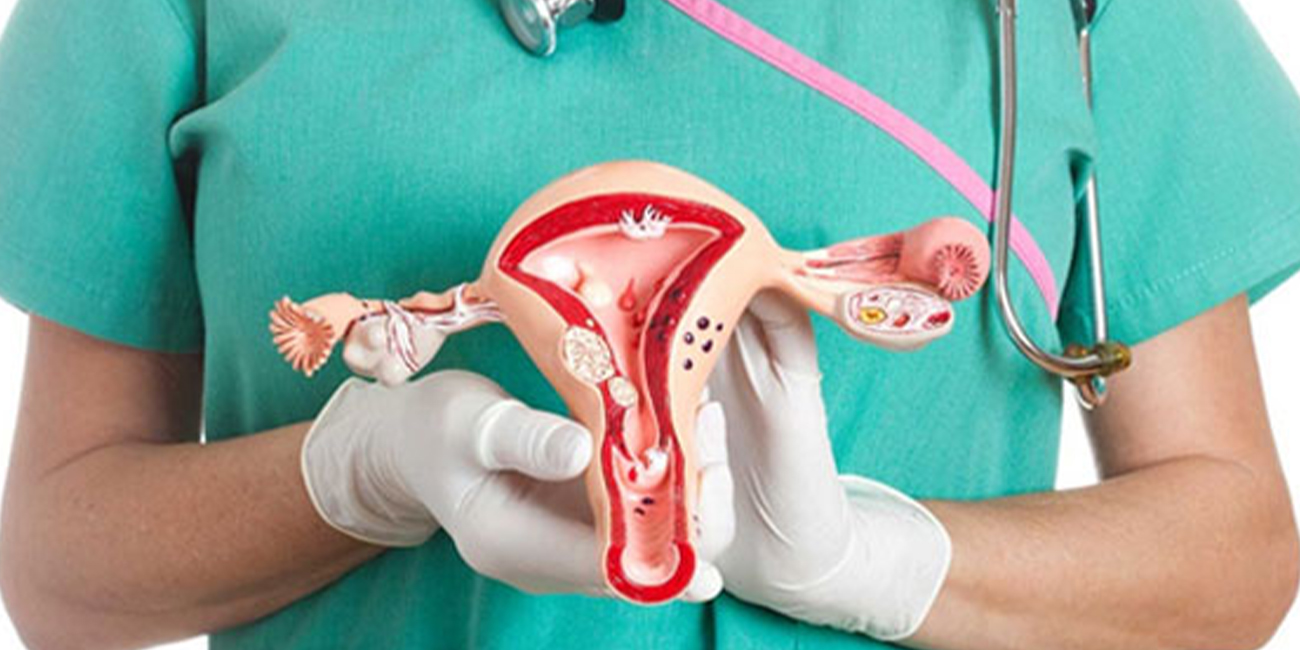
Book a Consultation
Thank you!
Your form has been sent successfully.



August 04, 2023
Eyelid cancer refers to the development of malignant cells in the tissues of the eyelid. It is a relatively rare type of cancer but can occur in both the upper and lower eyelids. Eyelid cancer typically arises from the skin cells on the eyelid and can manifest in various types, including basal cell carcinoma, squamous cell carcinoma, sebaceous gland carcinoma, and melanoma.
Cancer on the eyelid can happen due to several factors including prolonged exposure to sunlight or ultraviolet (UV) radiation, fair skin, a history of frequent sunburns, and certain genetic conditions. The course of treatment is decided after diagnosis and it largely depends on staging, which assesses the extent and severity of eyelid cancer.
In this blog post, we will share a detailed understanding of eyelid cancer staging, how it guides treatment options, and steps individuals can take to prevent this disease. Read on to learn more.
The diagnosis process involves a careful evaluation of symptoms of eyelid cancer, a thorough examination by a healthcare professional, and the use of various tests. Cancer on the eyelid can produce the following symptoms
Individuals experiencing these symptoms should consult a physician to get an accurate diagnosis. Healthcare providers may conduct the following tests and examinations to diagnose eyelid cancer:

A healthcare professional usually examines the eyelid and surrounding areas first, assessing the size, shape, color, and texture of any abnormalities. They may also check the nearby lymph nodes for the presence of any enlargement.
Ultrasound, computed tomography (CT) scan, or magnetic resonance imaging (MRI), may be used to assess the extent of cancer, determine if it has spread to nearby structures or lymph nodes, and aid in treatment planning.
This procedure involves the removal of a small sample of tissue from the suspicious area on the eyelid. This sample is then sent to a laboratory for microscopic examination to determine if cancer cells are present and identify the specific type of eyelid cancer.
Not all lumps or masses on the eyelid are cancerous. Individuals should consult a healthcare professional if any concerning symptoms or abnormalities are observed. They can guide one through the diagnostic process, provide appropriate treatment options, and offer the required support.
Staging helps healthcare professionals plan the most effective treatments and determine the prognosis. To describe the stage of eyelid cancer, oncologists use a system called TNM, which stands for Tumor, Node, and Metastasis.
This part of the TNM system focuses on the size and location of the primary tumor to understand how advanced cancer is.
The N in TNM refers to the involvement of lymph nodes. Oncologists check if the cancer has reached the lymph nodes and, if so, which nodes are affected and how many are involved.
It refers to the spread of cancer to distant parts of the body and how far the cancer has extended.
By considering the information gathered from these three aspects (T, N, and M), oncologists confirm the stages of eyelid cancer., which are as follows:
At this stage, the tumor is still in its early form and has not become invasive. It has the potential to develop into cancer but hasn't spread beyond its original location.
The tumor is very small, measuring 5 millimeters or less, and has not invaded the supportive structure of the eyelid called the tarsal plate. However, cancer has not yet spread to nearby lymph nodes or any other parts or distant organs of the body.
The tumor is slightly larger, between 5 to 10 millimeters and it may have invaded the tarsal plate. However, it has not yet affected any lymph nodes or other areas of the body.
The tumor is between 10 to 20 millimeters or has spread extensively throughout the eyelid. However, it has not spread to lymph nodes or affected any other organs of the body.
The tumor is larger than 20 millimeters or has spread to nearby parts of the eye. It has not yet reached lymph nodes or spread to other body parts.
The tumor is advanced, but it has not spread to lymph nodes or other organs of the body.
The tumor is of any size and has spread to the nearby lymph node. But cancer hasn't yet reached other parts of the body.
The tumor has extended beyond the eye and may involve nearby lymph nodes. However, it has not spread to distant organs of the body.
The tumor is of any size and has spread extensively to distant areas of the body, including other organs or tissues.
Oncologists often recommend Mohs surgery- a precise surgical technique often recommended for basal cell and squamous cell carcinomas. It is highly effective for early-stage cancers (such as stage 0, I, and some stage II tumors).
Surgeons may also opt for surgical excision that involves removing the tumor along with a margin of healthy tissue. It is commonly used for early-stage eyelid cancers when Mohs surgery is not suitable.
This cancer treatment uses high-energy X-rays or other radiation sources to destroy cancer cells. Radiation oncologists may recommend radiation therapy as the primary treatment for certain cases of early-stage eyelid cancer or as adjuvant therapy after surgery to target any remaining cancer cells. It may also be used for larger tumors or advanced stages (stage III or IV) cancer to control the spread and alleviate symptoms.
Systemic chemotherapy is typically reserved for advanced stages of eyelid cancer (stages III and IV) when cancer has spread beyond the eyelid region. Oncologists may use it to slow down the progression of the disease, relieve symptoms, or improve overall survival.
It uses the power of the immune system to recognize and destroy cancer cells. Oncologists primarily use immunotherapy for advanced eyelid cancer (stages III and IV) when the tumor has spread to distant sites. Immunotherapy drugs, such as checkpoint inhibitors, may be recommended when other treatments have not been effective.
The eyelid cancer treatment recommendations may vary depending on the specific type of eyelid cancer, individual factors, and the expertise of the healthcare team. Contact a cancer treatment center to get a comprehensive evaluation by a team of specialists, including dermatologists, ophthalmologists, radiation oncologists, and medical oncologists.

Although prevention is not entirely possible when certain genetic factors are involved, individuals may reduce their risk by following a few measures, including:
Protect both the eyes and eyelids from harmful UV rays by wearing sunglasses with 100% UV protection. Choose sunglasses that block both UVA and UVB rays. Individuals may also consider wearing protective clothing or using wide-brimmed hats or caps to provide additional sun protection.
Do not use tanning beds that emit harmful UV radiation that can increase the risk of skin cancers, including those affecting the eyelids.
Schedule regular eye exams with an ophthalmologist or an eye care professional to detect any abnormalities or changes in the eyelids or other parts of the eye.
Perform regular self-examinations to identify any suspicious changes. Look for signs such as the development of new growths, changes in the color or texture of the skin, persistent sores or ulcers, or any other unusual symptoms.
Eyelid cancer represents a small but significant portion of all skin cancers, accounting for approximately 5% to 10% of cases. Implementing preventive measures can help minimize the chances of developing eyelid cancer. Also, individuals who have undergone the treatment process for eyelid cancer should not miss follow-up visits to healthcare professionals. Follow-up care aims to monitor the patient's progress, detect any signs of recurrence at an early stage, and address any potential complications or side effects of treatment.
For any queries or concerns about eyelid cancer, contact Advanced Cancer Treatment Centers, one of the leading cancer centers in Florida, that offers individualized cancer care plans under the surveillance of a multidisciplinary team of healthcare professionals.



January 07, 2026
A chemo port is a small device placed under your skin that makes recei...
KNOW MORE

December 24, 2025
It's natural to wonder if testosterone replacement therapy (TRT) is sa...
KNOW MORE

December 24, 2025
A rash that will not calm down is scary, especially when it changes or...
KNOW MORE

December 24, 2025
Florida’s lung cancer burden remains significant and affects many fa...
KNOW MORE

December 24, 2025
A partial hysterectomy, also called a supracervical hysterectomy, is s...
KNOW MORE

December 24, 2025
Finding a rash on your breast can be unsettling, but remember, many ra...
KNOW MORE
